Canada geese are large waterfowl native to North America, and occasionally Europe. Humans have also introduced them outside of their native range in the United Kingdom, the Falkland Islands, New Zealand, Chile, and Argentina. They are incredibly common birds, and can even become a nuisance because they are so successful in urban areas. Read on to learn about the Canada goose.
Description of the Canada Goose
These geese are incredibly easy to recognize, primarily because they live everywhere. They have a black head and neck, and a white chinstrap. The rest of their feathers, known as plumage, are brownish, gray, and black.
This goose species is quite large, and they have a wingspan up to 6 feet across! Male geese are larger than females, and large males can weigh up to 18 pounds or more.
Interesting Facts About the Canada Goose
Canada geese are incredibly common, and can be quite a nuisance. However, there are a number of fun facts about these birds that you may not know. Learn more about these birds below.
- A Goose is a Goose, but not a Gander – Hypothetically speaking, you should not call every goose, a goose. This is because male geese are actually called A female goose is a “goose,” and a baby goose is a gosling.
- Geese – You can call a group of geese by a few different names. The most common term, “flock,” you can also use for most birds. However, other, more unusual, terms include “chevron” and “string.”
- Dedicated Lovers – Like many other species of geese, Canada geese are monogamous. Monogamous animals stay with the same mate their entire lives. The only time they take a new mate is if their partner dies.
- Human Success = Goose Success – Geese are so successful because humans have created a perfect environment for them. Many things that we do to alter our environment make that environment just what geese need to thrive. They love open areas so that they can see predators, and manicured grass that they can eat. Because of this, you can see them congregating in parks, airports, golf courses, and more.
Habitat of the Canada Goose
Fresh water is a primary need for these geese, and they seek it nearby wherever they happen to be. They will flock to lakes, ponds, streams, rivers, retention ponds, and even swimming pools! Parks, gold courses, housing developments, and airports, all sport water sources, and perfect green grass. This is the perfect habitat for Canada geese, and they take advantage of these areas commonly.
Distribution of the Canada Goose
Where you can find Canada geese varies based on what time of year it is. In some areas, the geese are becoming permanent residents, when they used to migrate south for the winter.
At different times of year, they can range across the entirety of North America, coast to coast. The southern United States is their home during the winter, the northern United States has a year-round population, and Canada has a summer population.
Diet of the Canada Goose
For the most part, these geese are herbivores. However, they will occasionally feed on insects and small fish when they see an opportunity. Outside of that, their usual diet consists of a wide range of grasses.
These geese will also eat aquatic plants, corn, seeds, wheat, rice, and other vegetation. While grazing, they grasp the grass with their beak and use a jerk of their head to tear bite-sized pieces off.
Canada Goose and Human Interaction
Like many other successful urban animals, Canada geese and humans interact frequently, and these interactions are usually negative. People view them as pests, and for good reason. The birds are susceptible to a number of diseases, which can spread to other native birds.
Their feces also spreads bacteria and drastically changes the water chemistry of lakes and ponds, often killing native wildlife. In retaliation, humans will injure or kill the birds, both legally and illegally. Researchers have suggested focusing on hunting only non-migratory geese, which cause the most damage.
Domestication
Despite the fact that they look like some domestic geese, Canada geese are wild birds. Humans have not domesticated them in any way, and they are protected under the Migratory Bird Act.
Does the Canada Goose Make a Good Pet
No, Canada geese do not make good pets. They are wild birds, and can be very loud, dirty, and aggressive. Federal Law protects the species from harm (see “Domestication”) and it is illegal to own them as pets.
Canada Goose Care
Zoos don’t typically keep Canada geese. You could house them like any other species of domestic geese, but they can fly and will escape unless their enclosure is quite secure. As social birds, they should live in groups and never alone. Sometimes you can see them in zoos, but most of the time they are wild, and come and go as they please.
Behavior of the Canada Goose
Most members of this species are migratory, and they will fly in groups to the south for the winter, and to the north for the summer. Migrating flocks usually fly in a v-shaped formation, to conserve energy while flying, as this is the most aerodynamic way.
The birds can be very aggressive, particularly while they are breeding. Pairs mate for life, and will protect their nest, eggs, and goslings from threats.
Reproduction of the Canada Goose
When a Canada goose turns two it begins to search for a mate. In most cases, it will stay with this mate until it, or the mate, dies. After breeding, the pair create a nest made of plant material and lined with their own feathers.
The female lays an average of five eggs, and both parents incubate them for approximately one month. The young geese, called goslings, begin to learn how to fly when they around two months old.


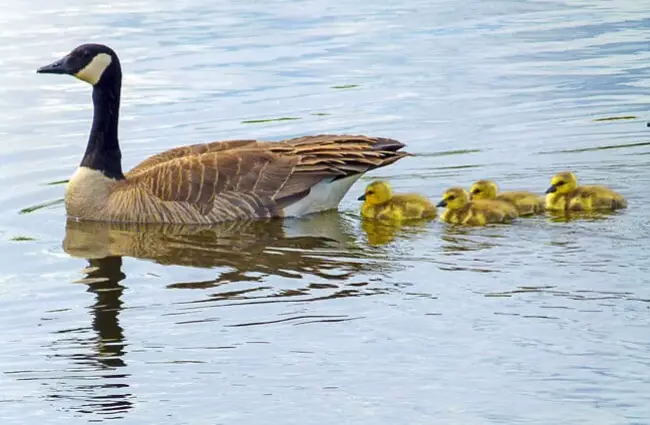
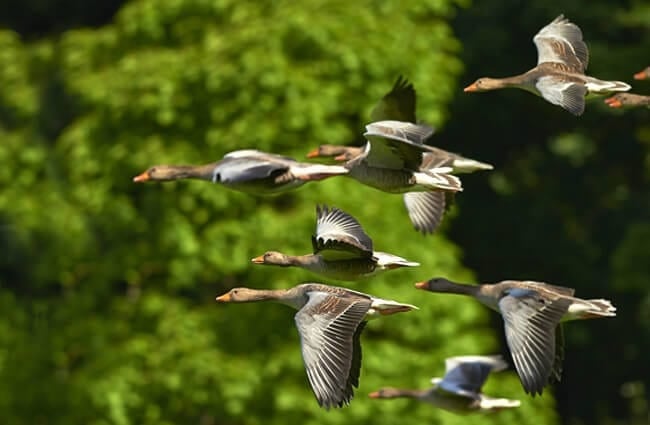
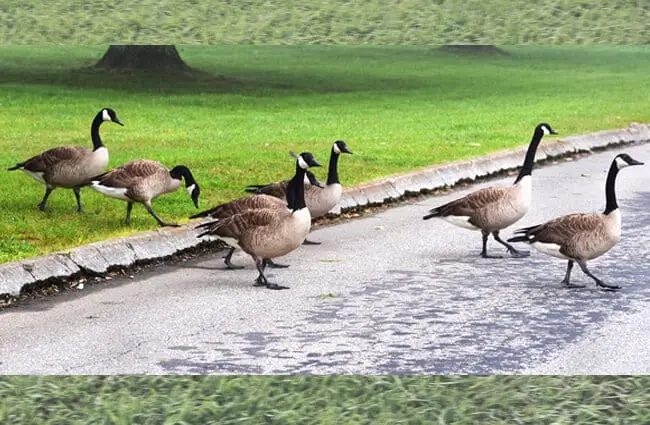
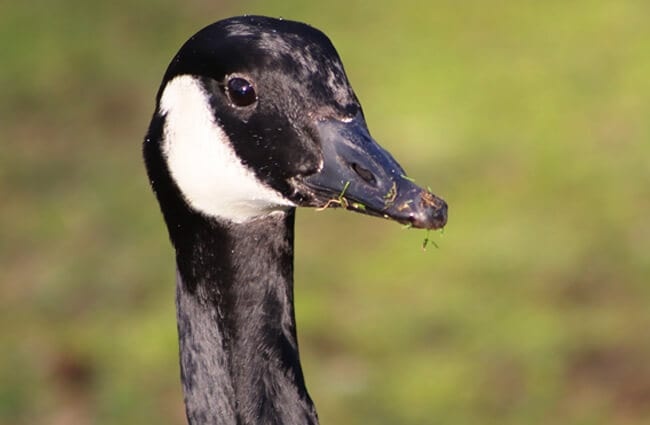
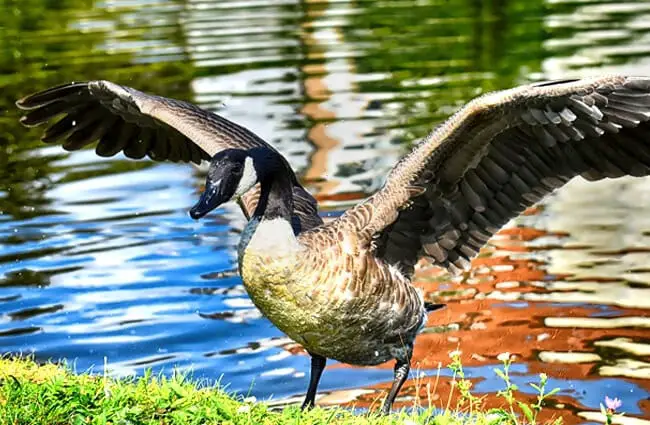
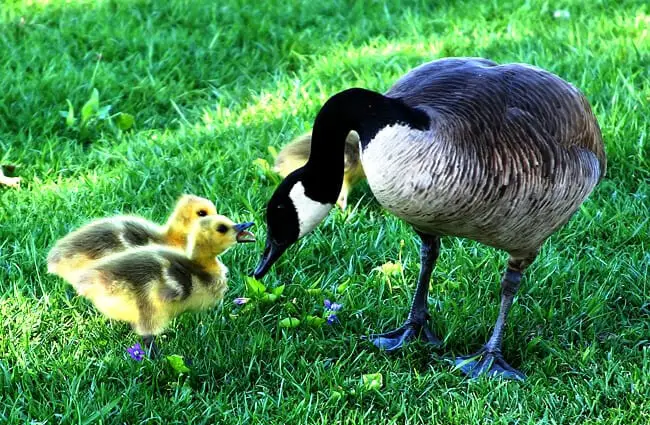
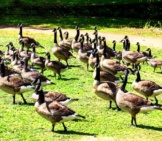
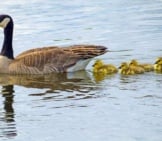
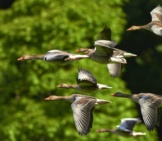
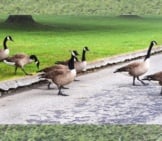
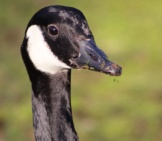

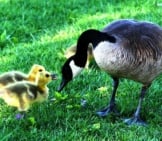
![Red Angus Closeup of a beautiful Red Angus cowPhoto by: U.S. Department of Agriculture [pubic domain]https://creativecommons.org/licenses/by/2.0/](https://animals.net/wp-content/uploads/2020/03/Red-Angus-4-238x178.jpg)


![Red Angus Closeup of a beautiful Red Angus cowPhoto by: U.S. Department of Agriculture [pubic domain]https://creativecommons.org/licenses/by/2.0/](https://animals.net/wp-content/uploads/2020/03/Red-Angus-4-100x75.jpg)

